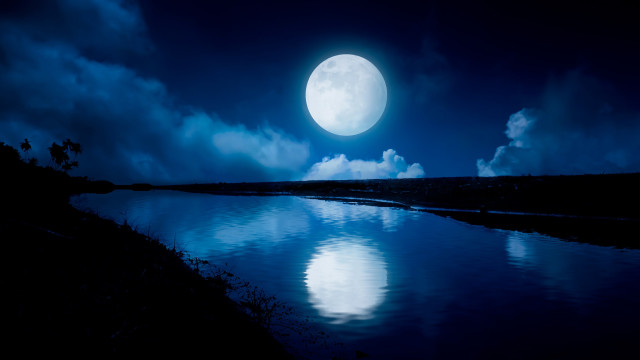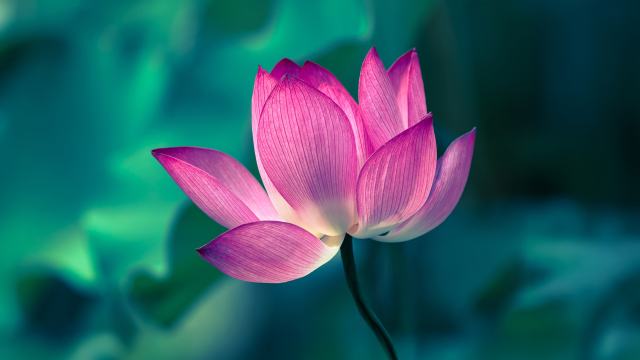Winter Solstice Wellbeing Rituals

Winter solstice is on Dec. 21 in the Northern Hemisphere. On this day, the earth's axis is tilted the farthest point from the sun, and the sun is at the lowest point in the sky. This makes it the longest night and the shortest day of the year.
Attune to the winter solstice through the power of sound vibration. Watch Jeralyn Glass for a Winter Solstice Sound Bath.
What Is the Winter Solstice?
For many, the coming of winter marks a time of shifting gears. Looking at the winter solstice from a modern-day perspective, we could use the Chinese philosophical concept of yin yang as a framework for this shift:
Yin:
Feminine, moon, “being,” cold, internal, intuitive, "I am" mindset
Yang:
Masculine, sun, “doing,” hot, external, analytical, "I can" mindset
We can consider winter solstice as the yin: a time for slowing down, reflecting and turning inward, honoring “being” over “doing,” which can allow us to connect deeper to our intuition. This shift can be difficult because our society tends to value the more active energy of “doing,” rewarding the accomplishment of tasks, which can often feel overwhelming this time of year.
To maintain balance, we must remind ourselves of the value of slowing down, of turning inward, connecting with the sense of "I am,” and inviting in a more restorative space. Why is this important? It helps restore the natural flow of energy, and it is from this quieter space that true creativity arises. Winter is a great time for journaling, reflecting, meditating, and other restorative practices.
Watch Almeiri Santos for a special guided meditation session, Winter Solstice Meditation.
For Greta Hill, a Roundglass meditation teacher and wellness coach based in Seattle, she honors the winter solstice as a way of blessing and releasing the ending year. “These long winter nights are an opportunity to deeply rest, reflect, and be nourished by the blanket of darkness while remembering the promise of the light and cultivating our inner vision and hope for what is to come.”
Join Greta Hill for an on-demand meditation session, Winter Solstice: The Darkest Night.
Just as trees shed their leaves back to the earth, which turn into fertilizer for the soil and help fuel new growth in the spring, winter solstice reminds us to honor taking time to slow down, and release what is no longer serving us, to recharge and inspire innovation for tomorrow.
Archaeological sites around the world also mark the winter solstice. Stonehenge for example, was built to frame the sunset on the winter solstice. Tulum, Mexico and Egypt have other breathtaking examples in the form of temples.
How to Celebrate Winter Solstice
Sacred ceremonies, feasts, and rituals have marked the winter solstice in cultures around the globe since prehistoric times. The major theme of these rituals and celebrations is the return of light, literally and metaphorically. Recently, there has been a resurgence of interest in gathering at these sacred sites on winter solstice.
“My own winter solstice rituals include early morning and late evening meditations, writing out what I wish to release as well as my hopes for the new year (and then burning the pages in a ritual fire), lighting my house by candlelight and turning off all electricity, walking outside in the dark night sky, waking up early the following morning to sing Gayatri Mantra and welcome the return of the solar energy,” adds Hill.
Join Vishvapani Blomfield for Winter Solstice Guided Visualization Meditation. Meditate on the rising sun.
As daylight shortens and people tend to spend more time indoors due to the cold, the reduced exposure to natural light leads to lower levels of vitamin D, and increased melatonin secretion. For some, these changes can cause Seasonal affective disorder (SAD). SAD is a type of "winter depression," where symptoms start in the fall and continue into the winter, and is marked by low energy, loss of interest in usual activities, changes in appetite, trouble sleeping or oversleeping, difficulty concentrating, and other depression-type symptoms. The Mayo Clinic suggests meditation as an adjunct therapy for SAD, in addition to traditional treatment.
Other recommendations for adjusting to the winter season include exposing the face to bright light first thing in the morning, and if you are up for it, spending some time outside for some breaths of fresh air. Vitamin D supplements might be helpful, especially if you live farther north. Good sleep hygiene, which includes reducing screen use and blue light before bed, and a regular bedtime/waking schedule and routine can help maintain circadian rhythm balance, facilitating the body in maintaining balance as it adjusts to changes in the season.
Finally, it is important to be kind to yourself, and not create shame for having an urge to slow down. We are connected to the cycles of nature, and as the ancient cultures remind us, this is something to celebrate.
Header Photo: The Good Brigade/DigitalVision/Getty Images
Key Takeaways:
- The winter solstice, on December 21, is the longest night and the shortest day of the year.
- The winter solstice represents slowing down, and turning inward.
- Some rituals that mark the occasion are restorative practices like reflecting, guided meditation, and connecting with nature through early morning sunlight.










